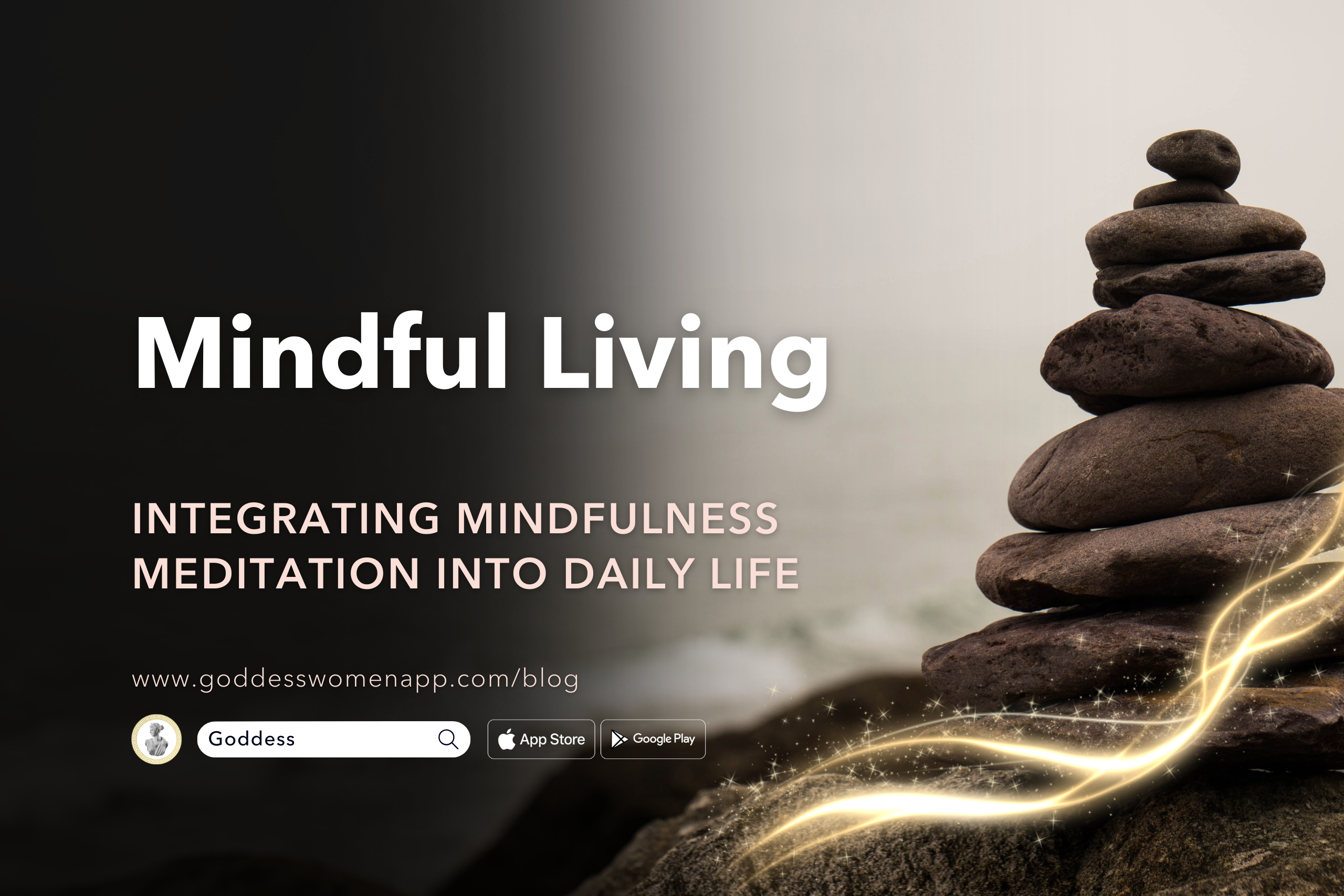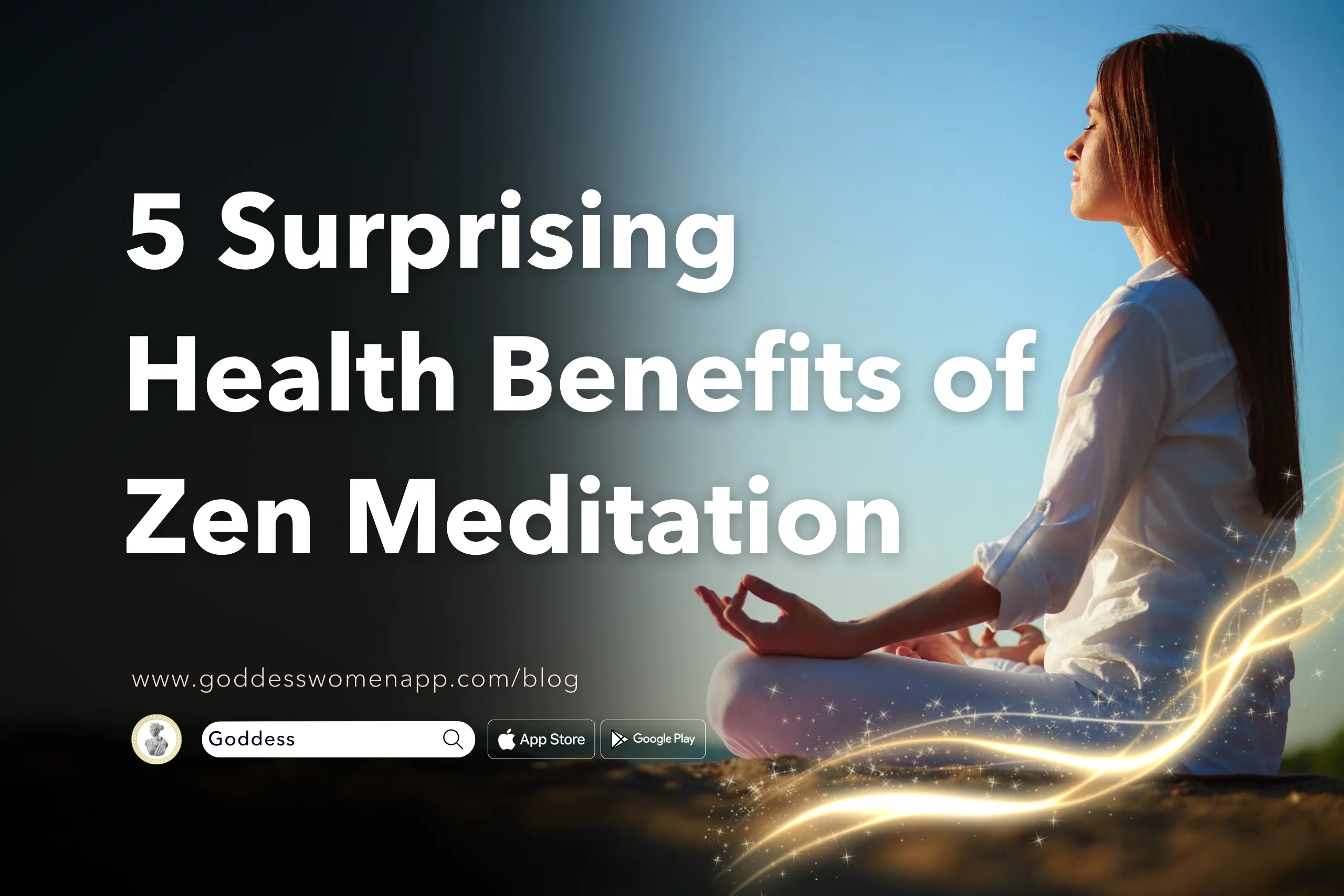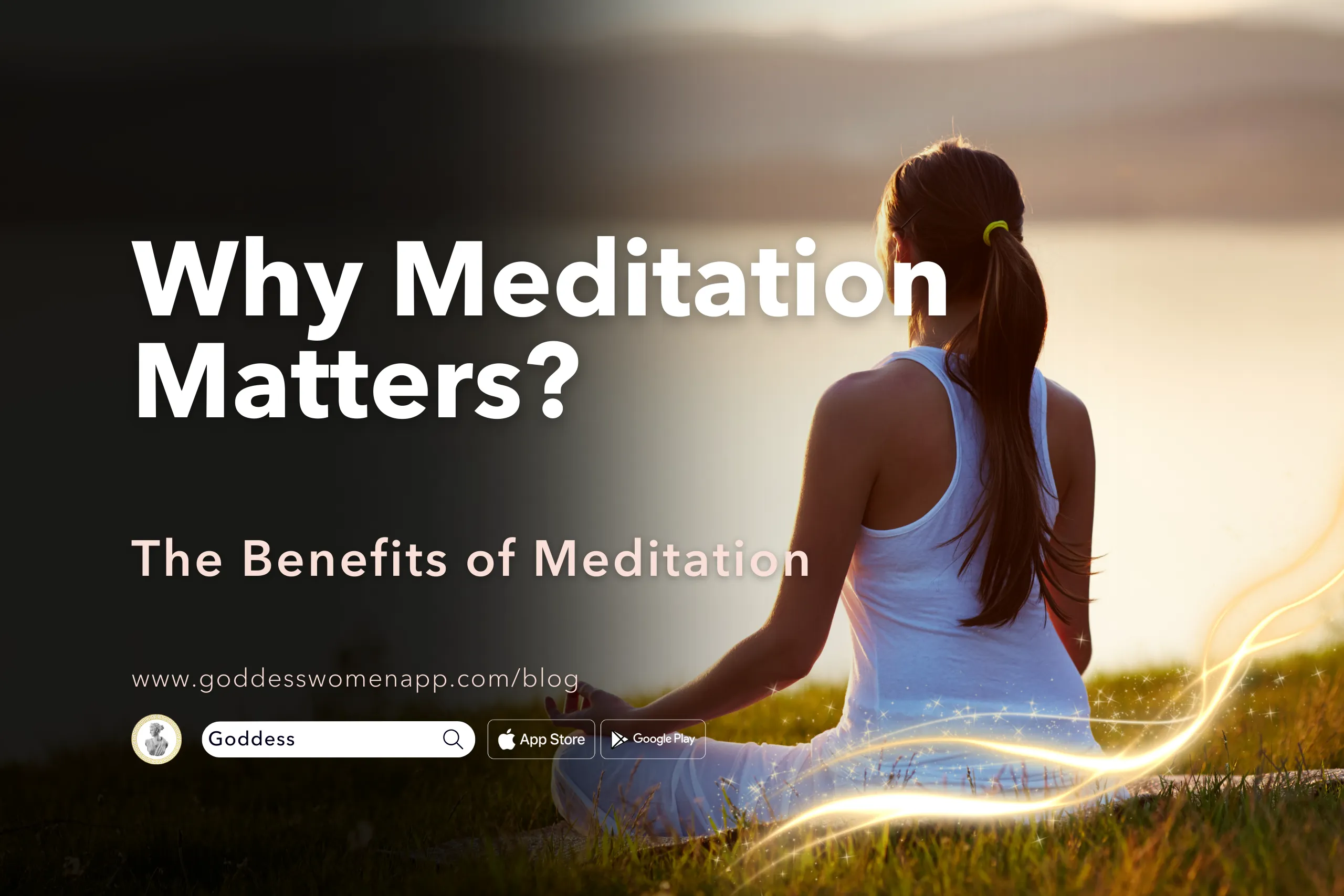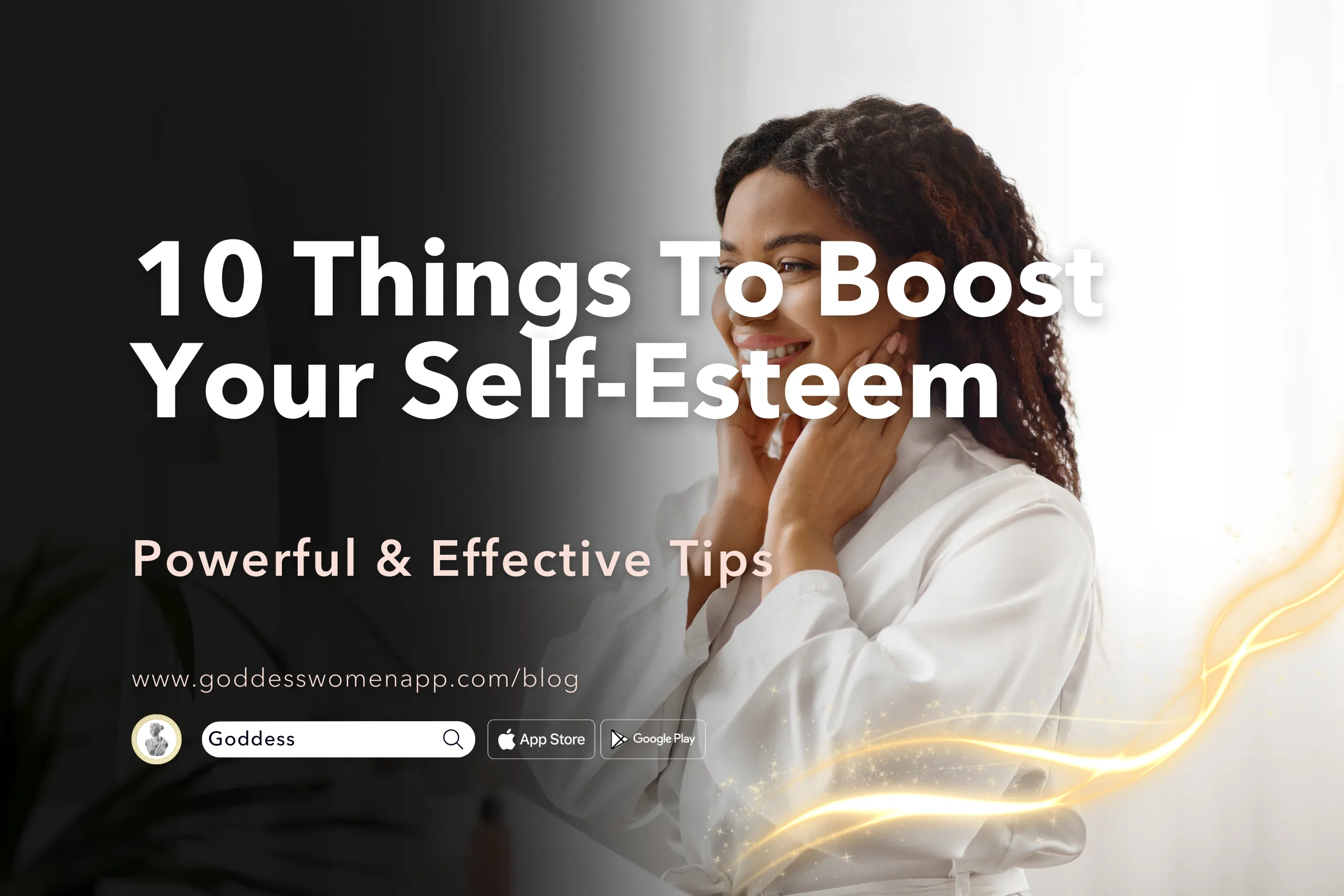Table of Contents
Introduction
In our fast-paced world, bombarded with constant notifications and demands, finding a moment of peace can feel like a distant dream. Yet, within this chaos lies a powerful ancient practice capable of transforming our experience of daily life: mindfulness meditation. More than a practice, mindfulness invites us into a way of living, offering a path to calm, clarity, and a deeper connection with ourselves and the world around us. “Mindful Living: Integrating Mindfulness Meditation into Daily Life” is not just about sitting in silence; it’s about weaving presence and awareness into the fabric of our everyday activities. This blog aims to demystify mindfulness, presenting it as an accessible, practical tool that everyone can incorporate into their busy lives for improved mental, emotional, and physical well-being.

Section 1: Understanding Mindfulness Meditation
The Essence of Mindfulness
At its core, mindfulness is the practice of being fully present and engaged with whatever we are doing at the moment, without distraction or judgment. It’s about noticing our thoughts, feelings, bodily sensations, and the environment around us with a gentle, open curiosity. This might sound simple, but anyone who has tried to meditate knows the challenge of taming the mind’s relentless chatter. Mindfulness meditation offers a way to train our attention, helping us to cultivate a state of alert, focused relaxation.
Historical Roots and Modern Applications
Though mindfulness has its roots in Buddhist meditation, you don’t need to be spiritual or religious to practice it. Over the last few decades, mindfulness has found its way into the Western mainstream thanks to its psychological and physiological benefits, backed by a growing body of scientific research. Programs like Mindfulness-Based Stress Reduction (MBSR) have brought mindfulness to a wider audience, demonstrating its effectiveness in reducing stress, anxiety, depression, and chronic pain.
How Mindfulness Works
Mindfulness works by helping us become more aware of our thoughts and feelings so that instead of being overwhelmed by them, we’re better able to manage them. Practicing mindfulness can change the way we relate to experiences, leading to a decrease in stress and an increase in emotional resilience. It’s like training a muscle – the more we use it, the stronger it becomes. By regularly practicing mindfulness meditation, we develop the ability to remain calm and centered in the face of life’s challenges.
Benefits of Mindfulness Meditation
The benefits of mindfulness meditation are extensive and well-documented. Regular practitioners report reduced stress, anxiety, and depressive symptoms, improved attention and concentration, enhanced relationships, and increased overall satisfaction with life. Physically, mindfulness has been linked to lowered blood pressure, improved immune function, and decreased chronic pain. Perhaps most importantly, mindfulness helps us cultivate a deeper sense of connection to ourselves and the world around us, enriching our experience of life.
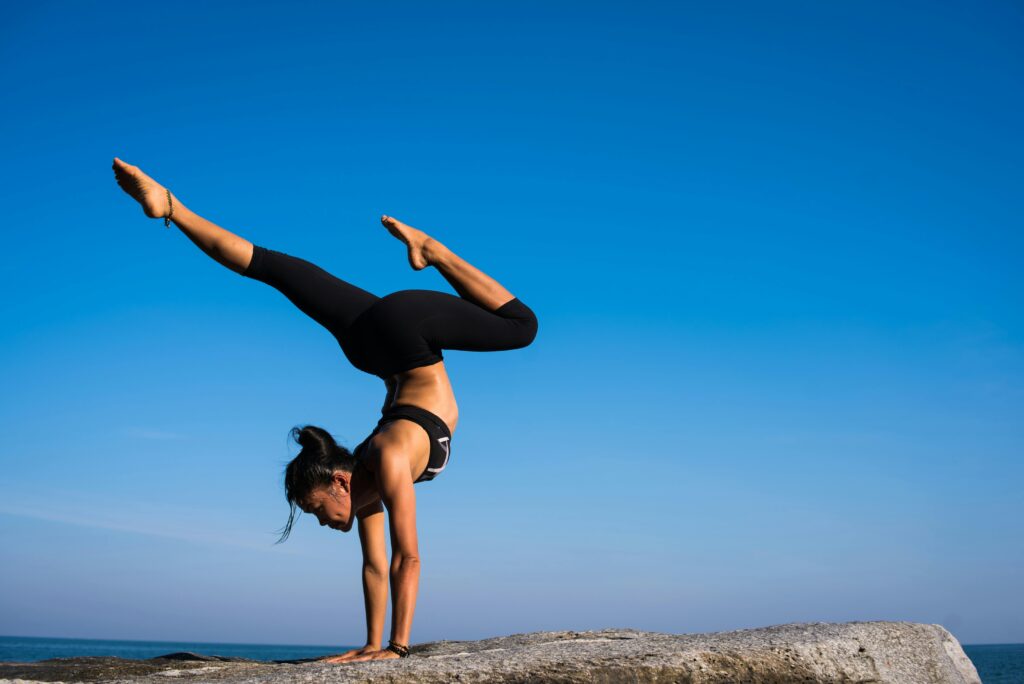
Section 2: The Challenges of Mindful Living
Integrating mindfulness meditation into daily life comes with its set of challenges, despite the proven benefits for mental and physical health, including stress reduction, improved handling of chronic pain, and enhanced mental state. One significant barrier is the misconception that mindfulness practice requires perfect quiet and isolation from the world. However, the essence of mindfulness is the ability to be fully present and aware in the moment, regardless of one’s surroundings. This can make practicing mindfulness meditation seem daunting in a world filled with distractions.
Another challenge lies in the commitment to regular practice. Just as the beneficial effects on heart disease, stress response, and brain regions involved in attention and emotion regulation require consistent effort, so does mindfulness. Many find it difficult to carve out time in their daily life to practice mindfulness exercises, such as body scan meditation or walking meditation, leading to frustration and a feeling of failure.
Moreover, the expectation of immediate results can be disheartening. Mindfulness is not a quick fix for life’s problems; it’s a skill that develops over time, contributing to well-being, self-regulation, and self-acceptance. New research in clinical psychology and mindfulness-based interventions like Mindfulness-Based Stress Reduction (MBSR) and Mindfulness-Based Cognitive Therapy (MBCT) shows that mindfulness helps, but it requires patience and perseverance.
Section 3: Simple Techniques to Begin Your Practice
Starting with Just a Few Minutes
Initiating a mindfulness meditation practice can be as simple as dedicating a few minutes each day to pay attention to your breath or body sensations. One effective exercise is the deep breath technique, where you focus on feeling the air moving in and out of your body, noticing how your chest or upper arms rise and fall. This can help ground you in the present moment and reduce stress.
Incorporating Body Scan Meditation
Body scan meditation is a foundational mindfulness exercise that promotes body awareness and helps in reducing physical pain and tension. Lie down or sit comfortably and bring your attention to different parts of the body, from the feet to the head. As you focus on each area, observe any physical sensations, such as warmth, tension, or pain, without judgment. This practice can help increase mindfulness of bodily sensations and foster a state of calm and relaxation.
Exploring Walking Meditation
Walking meditation is a form of mindfulness practice that integrates physical activity with mindful awareness. Choose a quiet place where you can walk slowly and deliberately. Pay attention to the sensation of your feet touching the ground, the rhythm of your steps, and the movement of your body through space. This form of meditation is particularly beneficial for those who find it difficult to sit still and offers the added advantage of connecting with nature.
Joining a Mindful Community
Engaging with a mindful community can greatly support your meditation practice. Mindfulness classes, meditation programs, and yoga sessions provide not only instruction but also the opportunity to practice mindfulness meditation with others. Being part of a community allows for sharing experiences, learning from others, and finding motivation to continue practicing mindfulness in daily life.
Embracing Mindful Moments Throughout the Day
Practice mindfulness meditation by finding opportunities for mindful awareness in everyday activities. Whether it’s paying attention to the sensations of water on your skin while washing dishes, noticing the taste and texture of your food during meals, or being aware of your breath during a stressful meeting, these moments can significantly contribute to your mindfulness skills and overall sense of well-being.
Mindfulness meditation practice is a journey, not a destination. By starting with simple techniques and gradually integrating mindfulness into your daily life, you can overcome the challenges and enjoy the profound benefits of mindfulness for your mental and physical health. Regular practice, patience, and a supportive community are key to deepening your mindfulness skills and enhancing your quality of life.

Section 4: Integrating Mindfulness into Daily Activities
Incorporating mindfulness meditation into daily life is a transformative practice that enhances mental and physical well-being. It’s about cultivating mindful awareness in every action, from the moment we wake until we fall asleep. This continuous thread of mindfulness not only reduces stress and improves mental health but also deepens our connection to the present moment, enriching our experiences and interactions throughout the day.
Mindful Morning Routine
Begin each day with mindfulness meditation practice. Upon waking, instead of immediately reaching for your phone, take a few deep breaths, feeling the air moving through your upper arms and chest. Notice the sensations in your body and any thoughts or emotions that arise, welcoming the day with awareness and intention. Incorporating mindfulness practices like a body scan meditation for just a few minutes each morning can set a positive tone, reducing anxiety and fostering a state of calm readiness for the day ahead.
Mindfulness-Based Stress Reduction during Commute
For those who commute, transform this time into an opportunity to practice mindfulness meditation. If you’re using public transport, engage in a seated meditation, focusing on your breath or the physical sensations of your body. For drivers, maintain a mindful awareness of the present moment by noticing the grip of your hands on the steering wheel, the sensation of your feet on the pedals, and the movement of your breath. This practice not only reduces stress response but also increases mindfulness, making the commute less taxing and more enjoyable.
Mindfulness at Work
Incorporate mindfulness practices into your workday to enhance focus and reduce stress. Take brief mindfulness breaks to practice deep breathing or engage in a short walking meditation during lunch. Before starting a new task, pause for a moment to take a deep breath, bringing your attention back to the present. Mindfulness-based cognitive therapy techniques can also be helpful in managing work-related stress, teaching you to observe your thoughts and emotions without judgment, thereby improving your mental state and overall well-being.
Mindful Eating
Turn meals into mindfulness exercises by practicing mindful eating. This involves paying close attention to the taste, texture, and aroma of your food, as well as noticing any physical sensations of fullness or hunger. Mindful eating not only enhances the enjoyment of meals but also supports healthy eating habits by encouraging a more attuned and appreciative relationship with food.
Integrating Mindfulness into Physical Activity
Exercise provides another excellent opportunity to increase mindfulness. Whether you’re practicing yoga, engaging in walking meditation, or simply going for a jog, focus on the movement of your body and your breath. Notice the bodily sensations with each step or pose, and if your mind wanders, gently guide it back to your physical experience. This practice not only improves physical health but also offers a path to greater body awareness and reduces physical pain associated with chronic conditions.
Mindfulness Before Sleep
End your day with mindfulness to ensure a restful night’s sleep. A brief body scan meditation or focusing on your breath can help calm the mind, reduce stress, and prepare the body for sleep. By paying attention to each part of the body and releasing tension, you encourage a state of relaxation that can make it easier to fall asleep.
Building a Daily Practice
The key to integrating mindfulness into daily activities is regular practice. Make mindfulness a part of your daily routine, not as an additional task, but as an enriching layer to what you already do. Over time, mindfulness meditation practice becomes second nature, enhancing your mental state, well-being, and quality of life. Remember, the goal is not to achieve perfection but to cultivate a deeper awareness and acceptance of the present moment in all its complexity.
Recent research in clinical psychology and neuroscience continues to support the beneficial effects of mindfulness-based interventions on mental and physical health. Whether through mindfulness-based stress reduction programs, mindfulness classes, or personal practice, engaging in mindfulness exercises offers a pathway to managing stress, chronic pain, and other illnesses, while promoting positive emotions, self-regulation, and a sense of inner peace.
Incorporating mindfulness into daily life is a journey of discovering the profound impact that being present and aware can have on your life. As Jon Kabat-Zinn, the founder of Mindfulness-Based Stress Reduction, often says, “The best way to capture moments is to pay attention. This is how we cultivate mindfulness.” By practicing mindfulness meditation regularly, you invite a sense of calm, focus, and joy into every aspect of your daily life.

Section 5: Creating a Mindful Environment
Creating a mindful environment is a critical aspect of deepening and supporting your mindfulness meditation practice. A mindful environment fosters a sense of tranquility and presence, encouraging us to engage more fully with our mindfulness practice and integrate it into our daily life. This environment can be cultivated in both our physical surroundings and the social and emotional spaces we inhabit.
Physical Environment: Designing Spaces for Mindfulness
The spaces where we live and work have a significant impact on our mental state and ability to practice mindfulness. By creating a dedicated space for mindfulness meditation, we signal to our brain that it’s time to slow down and be present. This doesn’t require an elaborate setup; a quiet, comfortable corner with minimal distractions will suffice. Consider including elements that promote relaxation and concentration, such as plants, soft lighting, or calming colors. The goal is to create a space that feels peaceful and inviting, encouraging you to practice mindfulness meditation regularly.
Mindful Organization: Clarity Through Decluttering
Clutter can be a major barrier to mindfulness, as it creates chaos and distracts the mind. Taking the time to declutter your living and workspaces can have a profound effect on your mental clarity and stress levels. Organize your environment in a way that promotes ease and efficiency, keeping only what serves you and letting go of unnecessary items. A decluttered space not only makes it easier to focus on the present moment but also reflects the mindfulness practice of letting go of attachments that don’t serve our well-being.
Creating a Mindful Atmosphere with Sensory Elements
Integrating sensory elements into your environment can enhance your mindfulness practice by engaging your senses and bringing your attention to the present moment. This can include the sound of a gentle bell or chime to begin and end your meditation, the scent of lavender or sage to promote relaxation, or the feel of a soft cushion or blanket. These sensory cues can help anchor your mindfulness practice, making it easier to transition into a state of mindful awareness.
Social Environment: Cultivating a Mindful Community
Beyond our physical spaces, the people around us significantly influence our ability to practice mindfulness. Surrounding yourself with a community of individuals who also value and practice mindfulness can provide encouragement, inspiration, and support. This can be achieved by joining mindfulness classes, workshops, or groups where experiences and challenges are shared. A mindful community offers a sense of belonging and reinforces the practice of mindfulness in daily life, making it easier to maintain and deepen your practice.
Emotional Environment: Fostering Positive Relationships
The emotional and relational aspects of our environment also play a crucial role in our mindfulness journey. Practicing mindfulness can improve our interactions with others, promoting empathy, patience, and communication. By applying mindfulness skills to our relationships, we can create more meaningful connections and a supportive, understanding environment. This involves being fully present during conversations, listening actively without judgment, and expressing ourselves authentically and compassionately.
Mindfulness in Daily Routines
Finally, integrating mindfulness into our daily routines helps create an environment where mindfulness is woven into the fabric of our lives. This could mean practicing mindful awareness while doing household chores, eating, or commuting. By bringing mindfulness to these everyday activities, we transform mundane tasks into opportunities for presence, awareness, and gratitude.
Creating a mindful environment is about more than just the physical space; it’s about cultivating an atmosphere that supports mindfulness in all aspects of life. By designing our spaces thoughtfully, decluttering our surroundings, incorporating sensory elements, fostering positive relationships, and embedding mindfulness into our daily routines, we create a conducive environment for mindfulness to flourish, enhancing our mental and physical well-being and enriching our lives.

Section 6: Overcoming Setbacks and Staying Motivated
Embarking on a journey of mindfulness meditation is a profound step towards enhancing well-being and fostering a deep connection with the present moment. However, like any journey, it may be fraught with setbacks and challenges that test our resolve. Understanding how to navigate these hurdles and maintain motivation is crucial for sustaining a mindfulness practice that enriches our mental and physical health.
Acknowledging and Accepting Setbacks
The first step in overcoming setbacks in your mindfulness meditation practice is to recognize and accept them as part of the process. Whether it’s struggling to maintain regular practice, dealing with a wandering mind, or confronting the inner critic, setbacks are inevitable. Mindfulness itself teaches us to observe our experiences without judgment, and this includes how we view our progress in mindfulness practice. When you notice your mind wandering during a body scan meditation or any mindfulness exercises, gently guide your focus back to the present moment without self-criticism. This act of returning to the present is, in itself, a practice of mindfulness.
Revisiting Your Intentions
One powerful method to stay motivated is to regularly remind yourself why you began practicing mindfulness meditation. Whether to reduce stress, manage chronic pain, improve mental health, or simply to cultivate a deeper sense of peace and well-being, reconnecting with your initial motivations can reignite your commitment to your practice. Mindfulness-based stress reduction (MBSR) and mindfulness-based cognitive therapy (MBCT) programs often emphasize the importance of clarifying your intentions as a foundation for sustained practice.
Setting Realistic Goals
Another key strategy is setting realistic, achievable goals for your mindfulness practice. Expecting to achieve perfect focus or immediate results can lead to disappointment. Instead, aim for gradual progress, such as increasing mindfulness in daily life activities or dedicating just a few minutes more to meditation each week. Celebrate small victories, like noticing when your mind wanders and bringing it back with kindness. These achievements, though seemingly minor, are significant milestones in deepening your mindfulness skills.
Seeking Support from a Mindful Community
Joining a mindful community can provide invaluable support and motivation. Sharing experiences and challenges with others who are also practicing mindfulness meditation offers perspective, encouragement, and a sense of connection. Mindfulness classes, meditation programs, and even online forums can serve as platforms for learning and growth. The collective wisdom of a mindful community can inspire and sustain your practice, reminding you that you’re not alone in your journey.
Incorporating Variety in Your Practice
Integrating a variety of mindfulness practices can also help maintain interest and motivation. Exploring different mindfulness exercises, such as walking meditation, yoga, or mindfulness practices focused on body awareness, can enrich your experience and prevent your routine from becoming monotonous. Attending different mindfulness classes or workshops can introduce new perspectives and techniques, keeping your practice fresh and engaging.
Reflecting on the Benefits
Regularly reflecting on the positive changes mindfulness has brought to your life can be a powerful motivator. Whether it’s improved mental state, reduced anxiety, enhanced physical health, or simply a greater appreciation for the little moments in life, acknowledging these benefits reinforces the value of your practice. New research continues to uncover the beneficial effects of mindfulness on brain regions associated with stress reduction, emotional regulation, and overall well-being, providing even more reason to stay committed.
Patience and Persistence
Ultimately, the key to overcoming setbacks and staying motivated in your mindfulness meditation practice lies in patience and persistence. Mindfulness is a lifelong journey that unfolds in its own time. Every moment of mindfulness, every deep breath taken with awareness, contributes to a richer, more aware existence. Remember, the practice of mindfulness is not about achieving perfection but about cultivating a deeper, more compassionate relationship with ourselves and the world around us. As Jon Kabat-Zinn, a pioneer in mindfulness-based stress reduction, eloquently puts it, “You can’t stop the waves, but you can learn to surf.” Embrace each moment with mindfulness, and let your practice be a source of strength, peace, and joy in your life.

In our journey through “Mindful Living: Integrating Mindfulness Meditation into Daily Life,” we’ve explored the transformative power of mindfulness meditation and its profound impact on mental and physical health. We’ve seen how mindfulness practice can reduce stress, manage chronic pain, improve our mental state, and enhance our overall well-being. By cultivating mindful awareness through mindfulness exercises such as body scan meditation, walking meditation, and various mindfulness-based interventions, we can increase mindfulness in our daily lives, fostering a sense of peace and presence in the present moment.
Mindfulness meditation practice is more than just a technique for stress reduction; it’s a path to discovering deeper self-acceptance, improving physical health, and nurturing positive emotions. Through regular practice, whether it’s just a few minutes a day, we can develop mindfulness skills that help us navigate life’s challenges with grace and resilience. The evidence supporting the beneficial effects of mindfulness on brain regions involved in emotion regulation, stress response, and the body’s physical sensations continues to grow, offering hope and healing to those affected by anxiety, heart disease, and other illnesses.
The call to integrate mindfulness into daily life is a call to action for each of us to live more fully, aware of our thoughts and emotions, our bodily sensations, and the world around us. It’s a practice that invites us to breathe deeply, pay attention, and engage with life in a more meaningful way. And while the path of mindfulness practice is personal and unique to each individual, it’s also a journey that benefits from the support and connection of a mindful community. Through mindfulness classes, meditation programs, and the shared experience of practicing mindfulness meditation, we find companionship and encouragement.
As we conclude, I invite you to take a step towards enhancing your practice of mindfulness meditation. Whether you’re looking to start your practice or deepen an existing one, the Goddess app offers a range of mindfulness meditations designed to support your journey. From mindfulness-based stress reduction courses to mindfulness-based cognitive therapy sessions, the app provides tools and resources to help you cultivate mindfulness in your daily life. Join a community of like-minded individuals, engage with mindfulness practices that nurture your well-being, and discover the peace and clarity that mindfulness meditation brings.
Let this be your moment to embrace the practice of mindfulness meditation, to explore the depths of your own awareness, and to transform your relationship with yourself and the world around you. Download the Goddess app today, and take the first step towards a more mindful, peaceful, and vibrant life.

